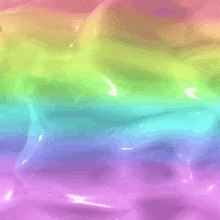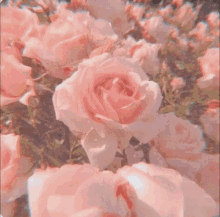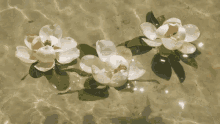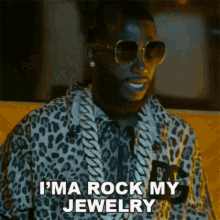Ever since Apple released the iOS 14 update in September, iPhone users have gone all out to make their home screens super aesthetic, and in this article, I'll be showing you how you can customize your own home screen! Obviously, it's up to you whether you want your phone to be super aesthetic but lacking functionality, or whether you want to find the sweet spot where it can be both, which is why this guide will show you the basic steps so you can add your own twist to your home screen! Remember, all of these steps are optional, so you can choose which ones you want to do!
Let us slide into your dms 🥰
Get notified of top trending articles like this one every week! (we won't spam you)Step 1: Find an Aesthetic
Now, this step isn't required if you want your home screen to be very basic, but if you are particularly into a specific aesthetic or a couple of aesthetics, this is the time to figure out how you want to incorporate that into your home screen!
I personally love the beige/neutral aesthetic, as well as the dark academia aesthetic, so my home screen includes both! Another idea, which I've seen quite a few people do, is to have separate pages (on your home screen) for different colors. This idea is for those who want their home screens to look good, but still want them to be very functional. If you go with this idea, you won't need to customize app icons, which is a step further, and also makes your phone less functional.
This is an example of a black home screen:
This is probably the easiest way to customize your home screen and still make it look aesthetic. However, if you want to go a step further, here is some inspiration:
Remember, these are only a few of the quite literally endless possibilities out there! So, to find out which one you want for your home screen, I would suggest making a Pinterest board with some pictures that appeal to you, and then figuring out what the primary colors in your aesthetic are.

Take the Quiz: What Color Palette Is Your Soul Made Of?
Discover your true colors with this quiz!
Step 2: Download Widget Apps
There are many, many widget apps that you can download, each with similar and different types of widgets.
The most popular one right now is 'Widgetsmith', and 'Color Widgets' is a close second. I also know of one called 'Photo widgets.' You can use one of these, or a combination of them to achieve your special home screen look!
I would suggest Widgetsmith because it has a number of widgets to choose from, whereas Color Widgets has just one style of widget with the date, day, and time, and you can choose whether you want it to display your battery percentage. For some people, the Color Widgets widget is a bit over the top, but it depends on your preference, so I would suggest downloading it to check it out, or looking online to see how it looks before downloading it.
Step 3: Shortcuts
If you're wondering how all of these home screens have app icons that are completely different, shortcuts is the answer!
While this isn't a new feature in iOS 14, it is definitely more useful now because previously, both the shortcut and the actual app had to be on the home screen, but now, you can simply remove the actual app. Don't worry, removing the app won't delete it, it will just move to the app library, which you can access by swiping left from your home screen (or from the last page of your home screen).
Anyways, back to shortcuts -
1. Open the Shortcuts app and click on the 'plus' on the top right corner.
2. Click on 'Add Action'
3. Click on 'Scripting', which is the third option on the top row that appears. It is a gray circle with an x as the icon.
4. Click on 'Open App' under Apps.
5. Now you can choose which app the shortcut will open by clicking on 'Choose'. This step will differ for each app you are making a shortcut for.
6. Once you have selected an app, click on the three dots on the top right corner.
7. Now click on 'Add to Home Screen'.
8. You can now name your shortcut whatever you want, and can also change the icon by clicking on the icon next to the shortcut name. This is where your aesthetic comes into play.
For example, if you have a neon aesthetic, then you would save some pictures from this aesthetic, either from Pinterest (which is probably the most suitable, in my opinion) or from other websites such as Unsplash. Now, all you need to do is select one of these pictures to be your app icon!
9. Repeat the previous steps for each of the apps you want on your home screen. Yes, it is a rather tedious process, so only do it for the apps you want on your home screen.
Step 4: Create Widgets
By now, you have all of your customized apps on your home screen, and you can remove the actual apps as well as the other apps that you don't want on your home screen by long pressing on the screen and clicking on the 'minus' sign on the top left corner of the app and then selecting 'Move to App Library.' Once your home screen is free of the apps you don't need or want on it, you can get started on creating widgets!
If you're using Widgetsmith, you will need to click on the size of widget you want - small, medium, or large, and then click on the widget that appears, which is probably a basic date/time widget with a black background. Now, you can choose what type of widget you want from the bunch of options under the 'Style' menu.
The next step differs based on which style of widget you chose, but if it is a date/time widget, you can change the font of what's on it. Then, you can choose the font color which is called 'tint color' in the app, and also the background color and the border color (if you want a border).
This is where your colors from your aesthetic come into play - you can change the background color of the widget to one of these colors so it'll fit your aesthetic. Here, you can kind of just play with the different options and create your own widgets. To add photos as widgets, all you need to do is choose the photo option under the style of widget, and then select a photo from your camera roll. Again, the photos from your aesthetic will be used here.
Step 5: Adding Widgets to Home Screen
By now, you should have all of your widgets ready in the widget app of your choice, and your app shortcuts should be on your home screen. Now, how do you add your widgets to the home screen? Again, long press on your screen, and then click on the plus button, which should either be on the top right or the top left corner of your screen. Here, you'll get a list of widget options from the different apps you have, so you can choose some of these if you like.
To get your customized widgets from Widgetsmith or Color Widgets or any other widget app, scroll down to the different app choices and select the widget app that you used. The apps are organized in alphabetical order, so Widgetsmith should be somewhere at the bottom.
Now, you can choose the size of the widget - if you made small-sized widgets, click on the small option and then click 'Add widget'. To get the other two sizes, just swipe to the left and then add them to your home screen. If you made a lot of widgets, you will have to repeat this process until all of them are on the screen.
If the widget simply keeps repeating, and you want the other ones that you made, you need to long press on the widget, and then select 'Edit Widget'. Now, click on the 'Widget' option, and then choose one of the widgets that you made. You might have to repeat this with the other widgets on your home screen as well.
Step 6: Putting it all together
Now you have all of your widgets and app shortcuts on your screen, so all you need to do is move them around to get the structure you want. To move everything around, you need to long-press on the screen again, and now you can move the app shortcuts and widgets around. Yay! You're done!
Bonus!
Okay, you have your home screen set up, but there are still some additional things you can try out if you aren't already tired of customizing your screen!
Let's say you have a bunch of widgets that you want on your home screen, but there's just not enough space for them, or it gets too cluttered with so many widgets. In such a case, you can just move the widget onto another one, creating a 'widget stack'. This is perfect for people who want a bunch of widgets on their screens, or widgets that don't match the aesthetic but are important, or if they just get bored with the current widgets (like me, haha)
Two other apps I use are 'Motivation' and 'TuneTrack'. The first one gives you a different quote every day, and has a widget that you can put on your home screen. You can also customize the theme so it fits with your aesthetic.
You'll see how I used it down below. The second app, TuneTrack, basically shows what you're currently listening to. It works with Spotify and Apple Music, and when you add the widget to your home screen, you can see what song you're playing at the moment.
This is definitely not a very functional widget, but for music lovers, it is simply amazing! You can see how I used this one too, down below.
Here is some inspiration for you, based on how I customized my home screen. It also includes a couple of structure ideas. I haven't used any large widgets, but you definitely can! Remember, this is only one idea, and there are loads of them you can try!
P.S. I don't use all of these pages, I made them in the beginning but when I didn't need them anymore, I simply long pressed on the screen, clicked on the dots which signify the different pages, and then hid the ones I didn't want.
This is how I used Widget Stack! Here, I added a to-do list widget through 'Widgetsmith', it's linked to the Reminders app, where you can create specific lists for different things. I also used the TuneTrack widget here. This is probably the page that took the shortest time to make!
This is like a white themed page with photo widgets from 'Widgetsmith'.
And this one is a little neutral/pink one! Here, you can see that I used the 'Motivation' widget, as well as a 'Color Widgets' widget, along with a picture widget from 'Widgetsmith'.
This is the page I am currently using! I love how it is so simple and neat, I also used the WidgetStack option in this. This is how it looks:
I hope this guide was helpful!











